
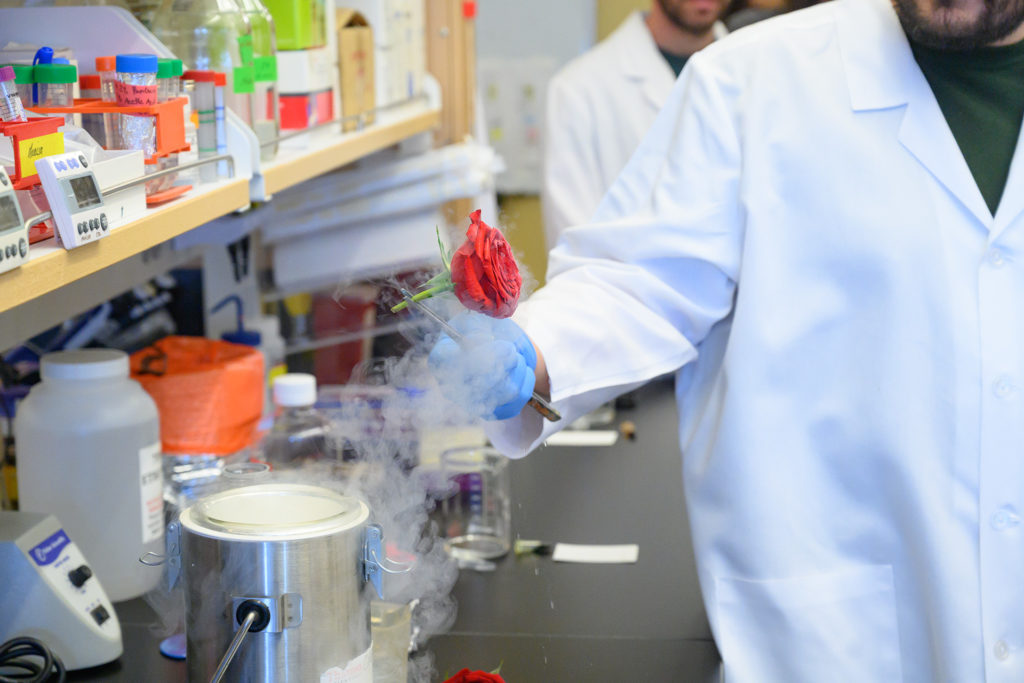
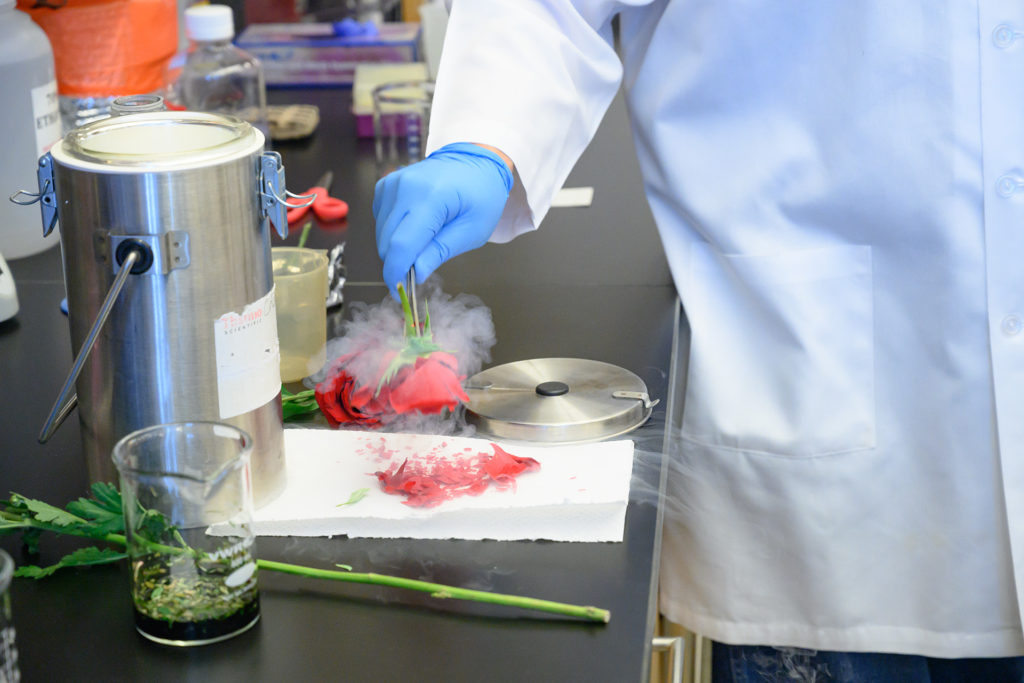

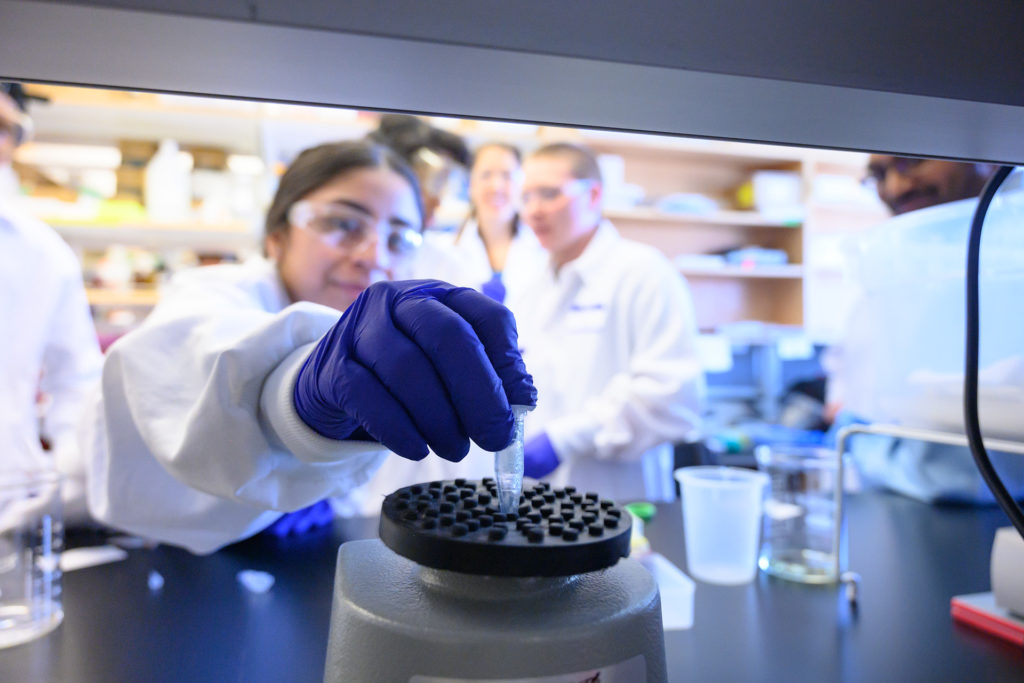
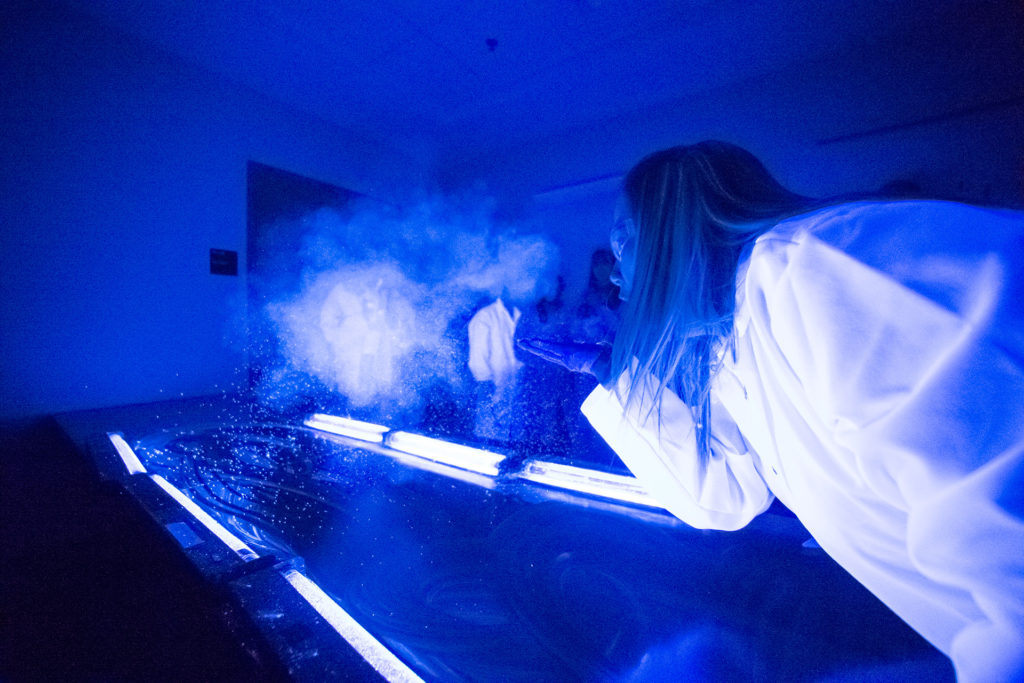
(John Eisele/CSU Photography)
By Jackson Watkins and Jessica Cox
As she spoke to a group of Colorado high school students, Danara Flores recalled how her parents “always told me not to breathe in cold air because I could get sick.”
At the time, she was unaware of why her parents were taking such strict precautions to keep her from getting sick.
“They always made me put on a jacket and zip it up all the way.” said Flores, a senior microbiology student. It would take her nearly 20 years to understand that a previous encounter with the deadliest infectious disease in the world was the root of her parents’ concern.

Building awareness
Flores is a tuberculosis survivor and was the keynote speaker at Colorado State University’s annual celebration of World Tuberculosis Day. The College of Veterinary Medicine and Biomedical Sciences is home to the largest contingent of TB researchers in the country, and its annual World TB Day event opens the CSU Mycobacteria Research Laboratories to high-school students for a personal look at how scientists work.
About 80 high-school students participated in hands-on activities in the labs: looking into microscopes to see infected lung tissue, using pipettes to transfer samples, and donning “bunny suits,” the personal protective equipment worn by researchers who work with highly infectious pathogens in the Biosafety Level 3 laboratories.
The lab houses more than 150 scientific investigators, staff and students working on innovations to diagnose, prevent, and treat tuberculosis and related diseases. They compose the largest group of university researchers in the world focused entirely on this category of infectious disease.
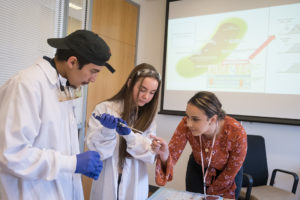
Until Flores began studying tuberculosis at CSU, she was unaware that she had ever been infected. As she learned more about the disease, she discovered that it often hides in the body for years or decades, until other infections weaken the immune system and give tuberculosis the opportunity to attack. Diagnosis is slow and sometimes inconclusive, and treatment is long and can be ineffective if the patient does not follow a strict regimen of daily antibiotics.
“I was lucky to receive preventative treatment,” Flores admitted. “This is not the case for everyone.”
Through her own experience with tuberculosis, Flores aims to inspire students that scientific work can be both a public and personal endeavor. She advocates for increased communication to the public about research, diagnosis, and treatment, and hopes that building connections between students and scientists will encourage others to join the fight against tuberculosis.
World TB Day
The global event marks Dr. Robert Koch’s discovery of Mycobacterium tuberculosis as the cause of TB on March 24, 1882. Koch was a German physician known as the founder of modern bacteriology; he won a Nobel Prize for his work.
Why Colorado?
Our state has historical ties to TB: In the early 1900s, Colorado was called the “World’s Sanatorium” because TB patients came here in droves, seeking remedy from sunshine and clean, dry air. The CSU veterinary program, founded in 1907, focused on eradicating tuberculosis from dairy cattle because infected animals can transmit TB to people through raw, unpasteurized milk.